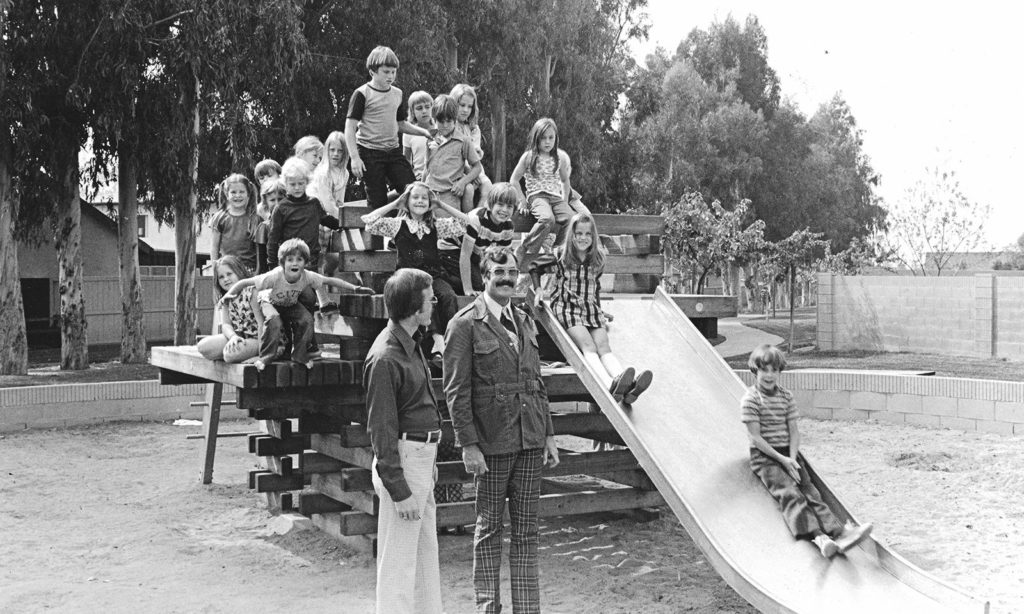How Irvine’s Master Plan Created a City of Parks

By Alan Hess
Parks provide some of the most memorable moments in American cities. San Francisco’s Golden Gate Park has forests, lakes, recreation fields and rose gardens. New York’s Central Park is a green oasis in the middle of Manhattan’s concrete canyons. Boston, Chicago and Philadelphia also built convenient, well-planned green space and recreation areas near the front doors of millions of city dwellings since the 19th century.
That’s the spirit that Irvine revived in the 1960s when the Irvine Company and architect/planner William Pereira master-planned our all-new city. If most new suburbs were largely asphalt, concrete and parking lots, Irvine’s parks would provide “relief from the confinement of the buildings, pavement, automobiles and noise of the city,” Pereira wrote then.
Learning from the best, Irvine’s parks echo the lessons of the great American landscape designer Frederick Law Olmsted. Like his Central Park, Mason Park’s winding paths, scenic lake views, playgrounds, meadows and groves blend active recreation with relaxing natural vistas.
But Pereira also updated Olmsted’s vision. America’s grand 19th-century parks had been “pleasure grounds” designed for carriages and formal promenades. Irvine’s parks would reflect the 20th century’s informal lifestyle with skateboard parks, barbecues and swimming pools.
Instead of placing one enormous park in the middle of the city (like Central Park), Irvine’s planners distributed parkland throughout the city. Calculating the demand in each neighborhood before a shovel of dirt was turned, Irvine wove its parks into the city’s fabric. Parks ranged in size from small village parks for family picnics (a quick walk from most homes) to large community and regional parks big enough for outdoor concerts and festivals.
Pereira initially stipulated 10% of Irvine’s land would go to parks. Today, it’s closer to 35%.
Thanks to Irvine’s Master Plan, parks large and small are an essential part of Irvine’s character.
Irvine resident Alan Hess has authored 20 books on architecture and community planning and is researching another on the Irvine Master Plan. He is an architect, a commissioner on the California State Historical Resources Commission, and was a National Arts Journalism Program Fellow at Columbia University’s School of Journalism.